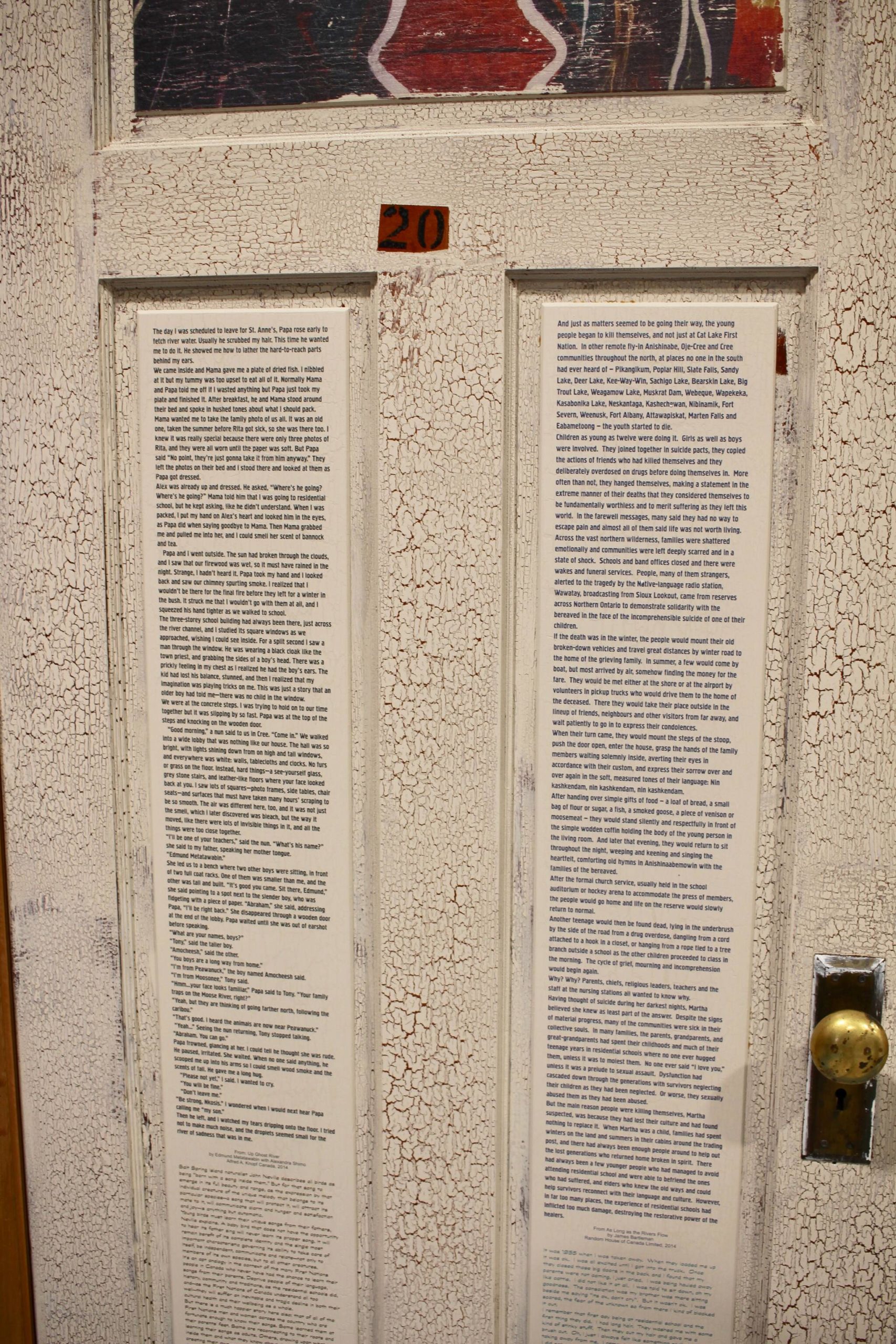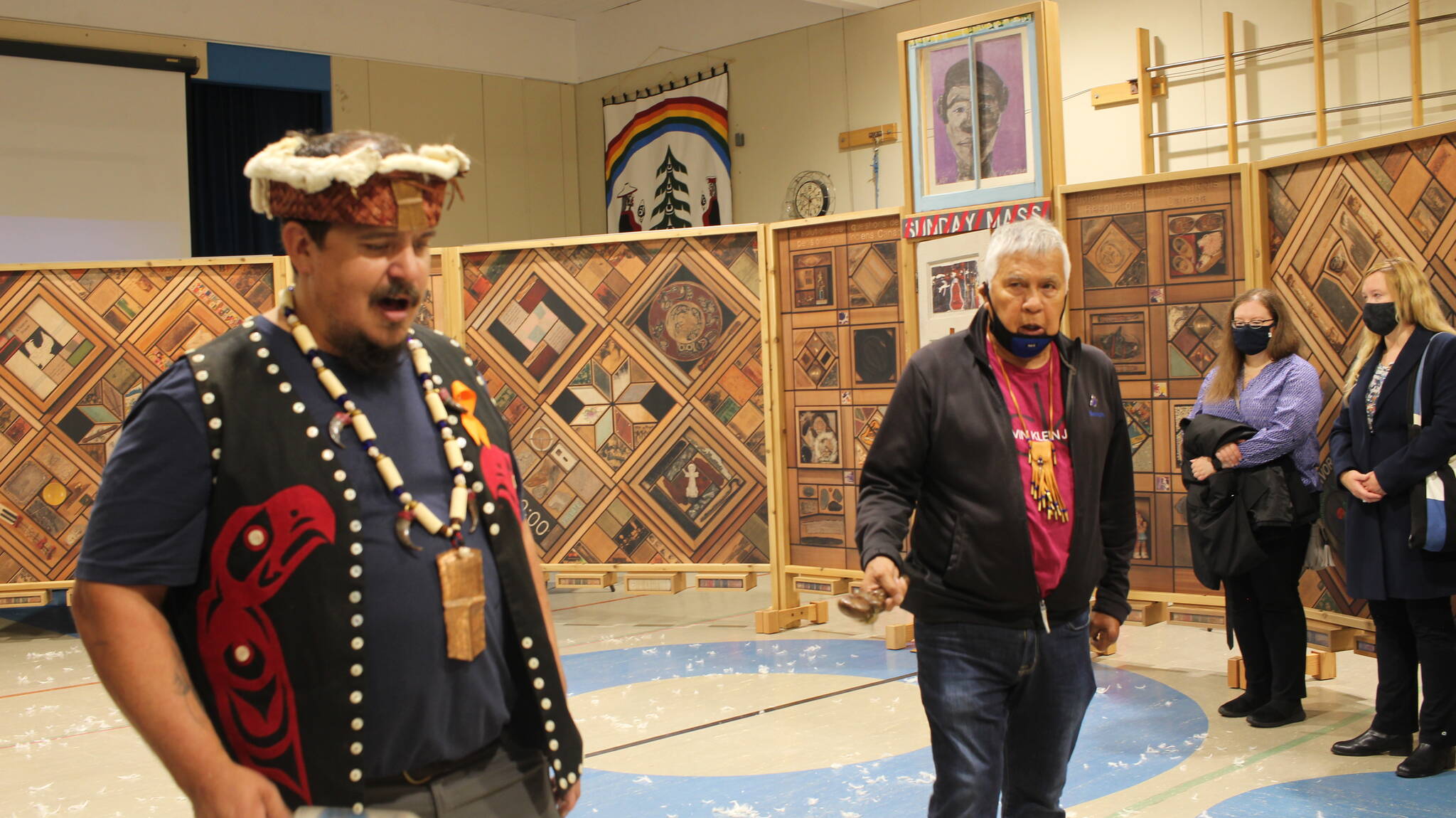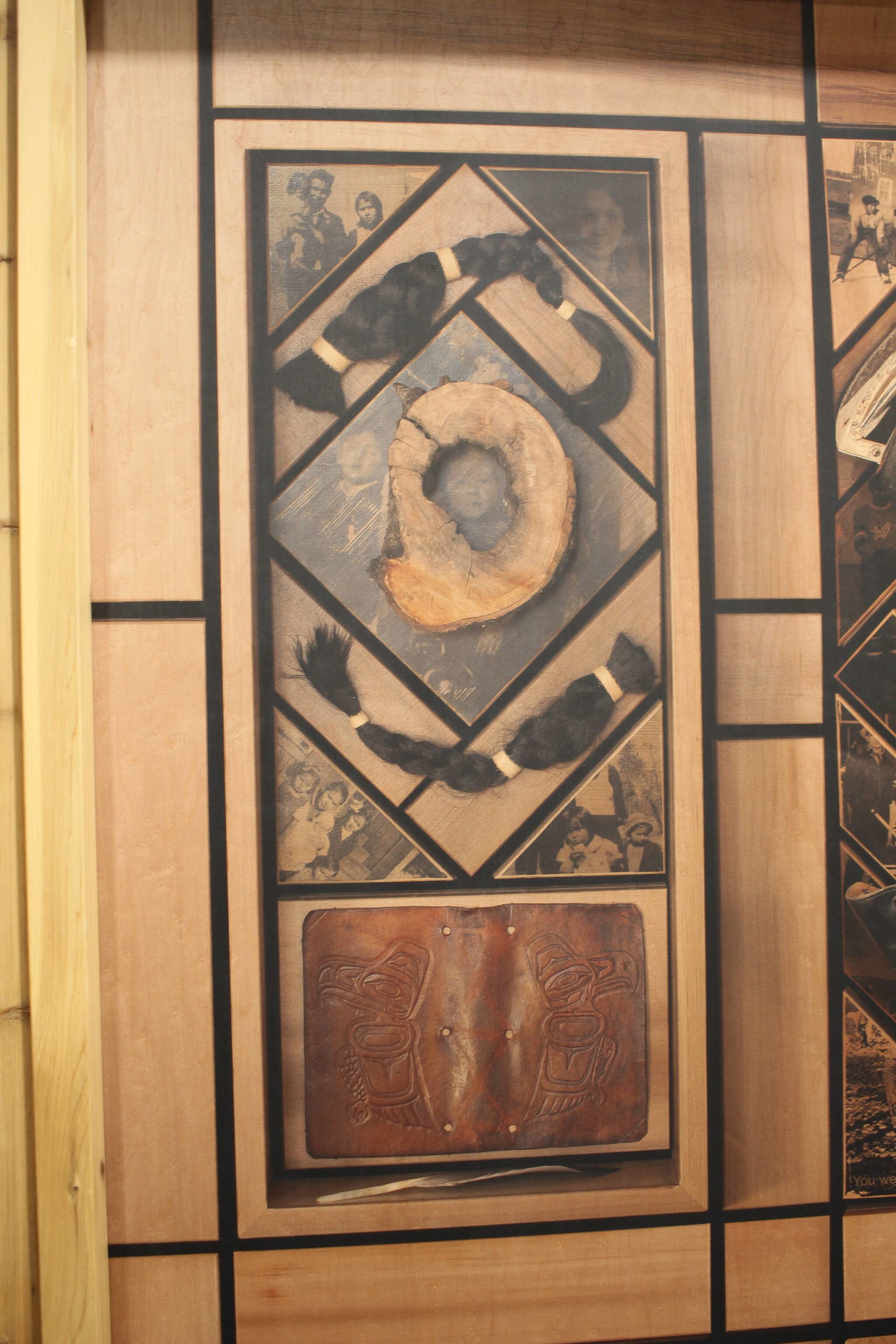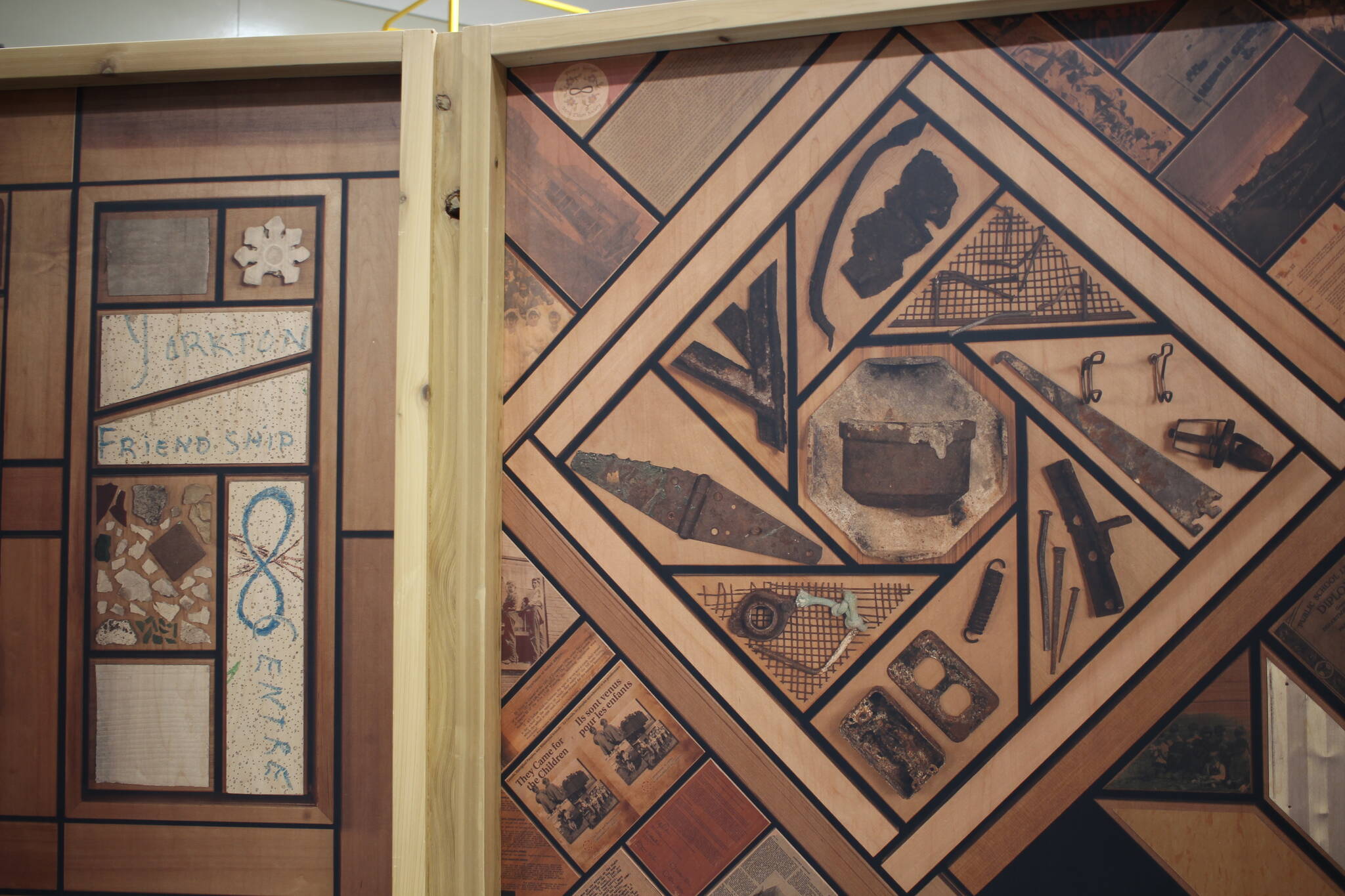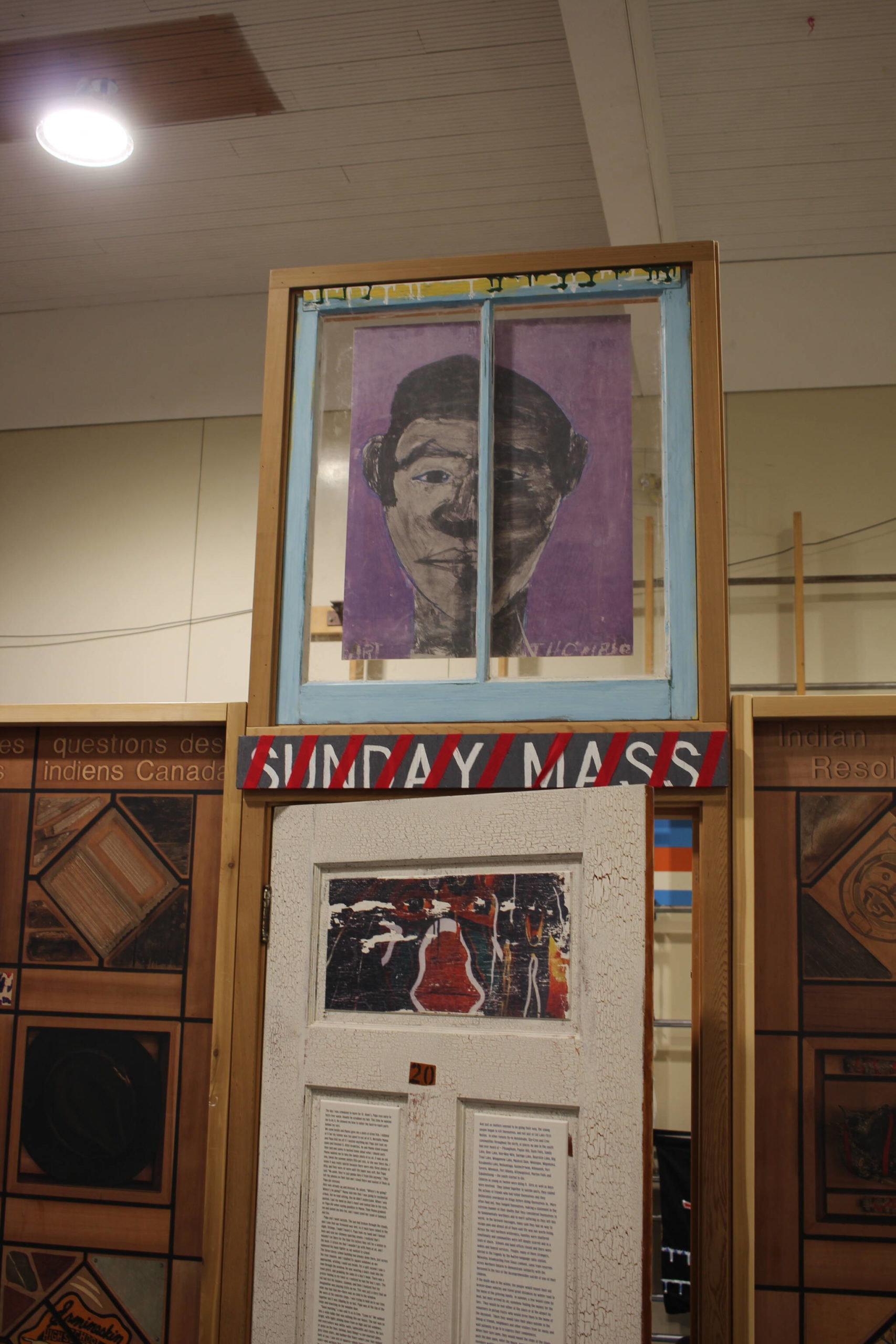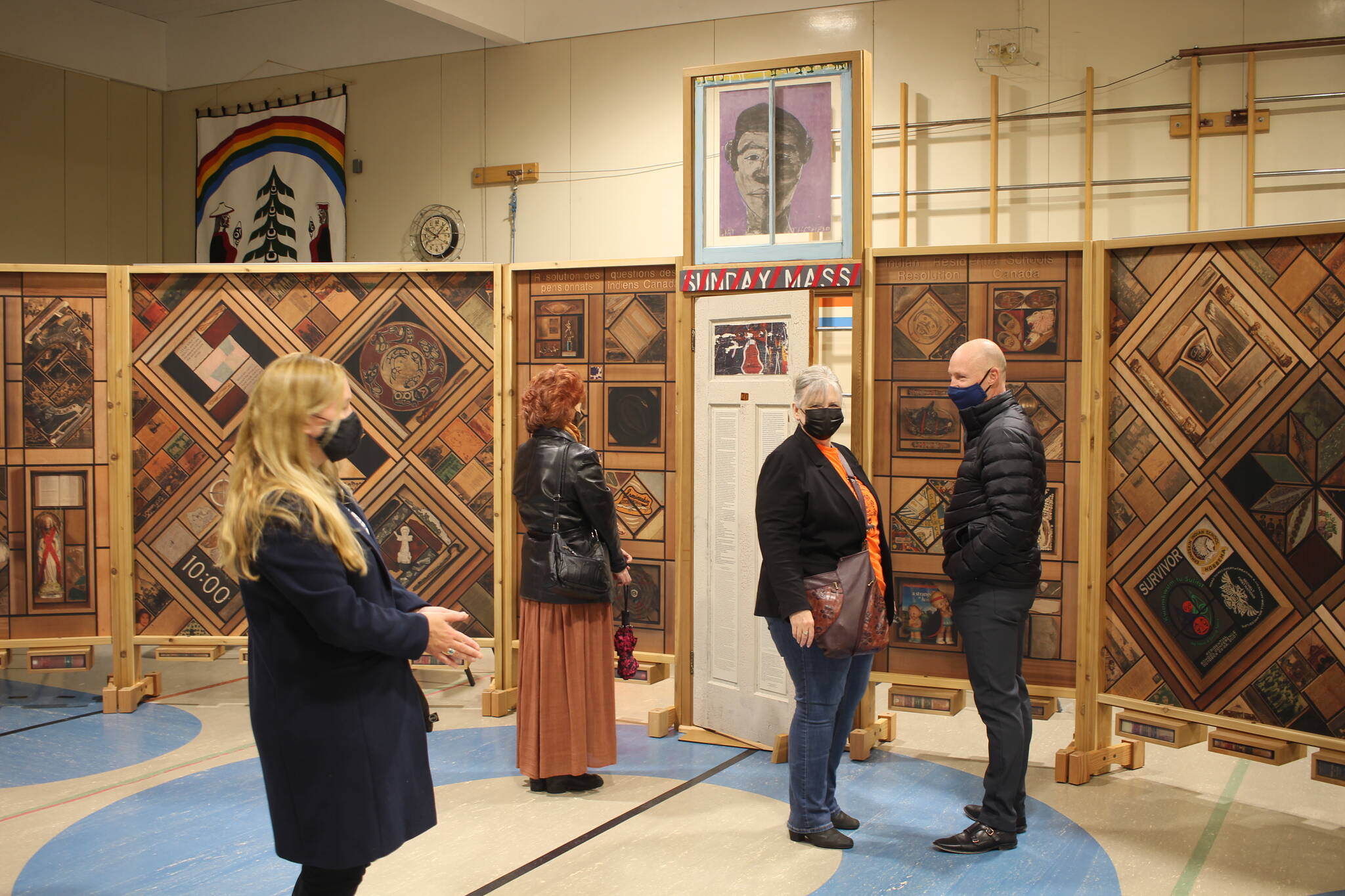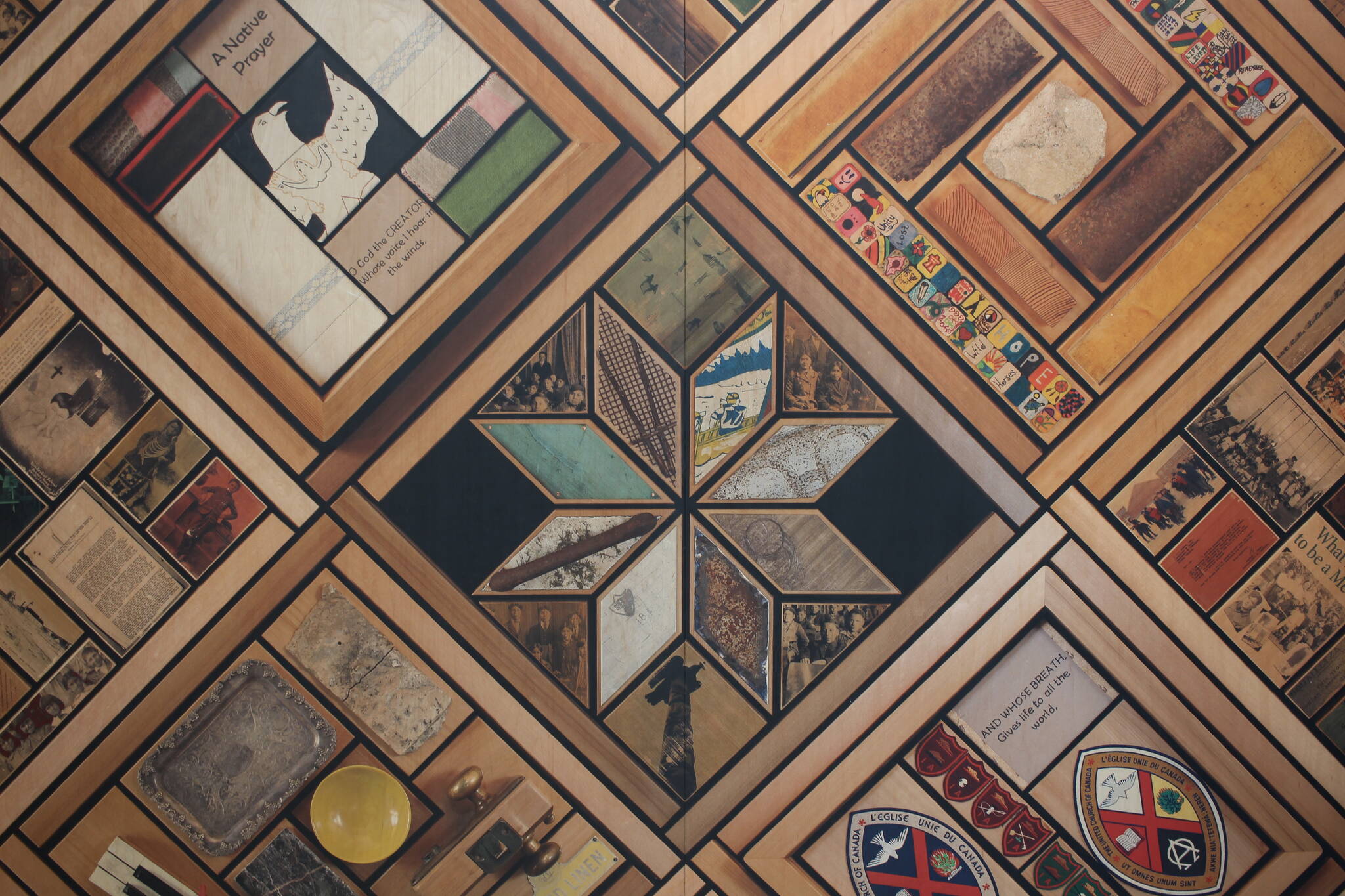On Monday morning, a small group of people gathered at the Laichwiltach Family Life Society gym to help welcome a new exhibit recognizing the impacts of the residential school system as well as paying homage to the children, and symbolizes ongoing reconciliation.
The Witness Blanket is an art installation created by master carver Carey Newman. Newman collected artifacts from 77 different residential school locations across Canada, and incorporated them into a large scale installation that allows people a more personal view of residential schools’ impact.
The installation at the Laichwiltach gym is a replica — the original is located at the Canadian Museum of Human Rights in Winnipeg and no longer travels, in order to preserve it for future generations — but portions of the installation are genuine. The door at the centre of the piece comes from the Alert Bay residential school, as does a window placed on top of the door.
Audrey Wilson, Laichwiltach Family Life Society executive director says the exhibit is “about the truth, the education.”
“There are so many effects from that and how it has really kept families apart. You see that in our community, in our own families. I didn’t go to residential school, but I have siblings who went to residential school. It has different effects on people, which is something that’s not talked about a lot. It’s important that we say the truth about what happened, acknowledge it and it’s about educating ourselves and our communities,” she said.
“We’re looking forward to schools coming here and making it part of their education. It wasn’t in the education system until about two years ago when they really started talking about residential school.”
During the welcoming ceremony, Shawn Decaire of LFLS sang, drummed and spoke about the exhibit.
“This is truly a remarkable exhibit that shows what we carry inside every day. This is not something that we made up. This is something that is true. This is something that, even though it is inter-generational, it is something that we carry,” he said. “I’m truly grateful to Mr. Newman, who brought this forward so that eyes can see this in a truer form, in a peaceful form where people can walk at their own pace, and take in exactly what took place.”
The exhibit will be open Monday through Saturday, from 10 a.m. until 4 p.m. It runs from Sept. 20 until Oct. 30. A documentary on the exhibit is available at the Museum of Human Rights website.
“This is so valuable right now, with what has taken place in recent months in this great nation,” said Decaire. “Eyes are opening, and we’re seeing the truth. That’s why we’re here. There’s growth from today, and we are breaking through that cycle. There are some stuff that they couldn’t take from us. They couldn’t take it all from us. The fact is, we’re still here, we’re still on our land, and we’re still proud to say who we are in our language, to sing, to dance, to act truly in our way.
“Words cannot describe the feeling of being able to do so.”
RELATED: Laichwiltach Family Life Society gets grant funding for new coordinator positions
Community Kitchen blessed by Laichwiltach First Nation
marc.kitteringham@campbellrivermirror.comLike us on Facebook and follow us on Twitter
